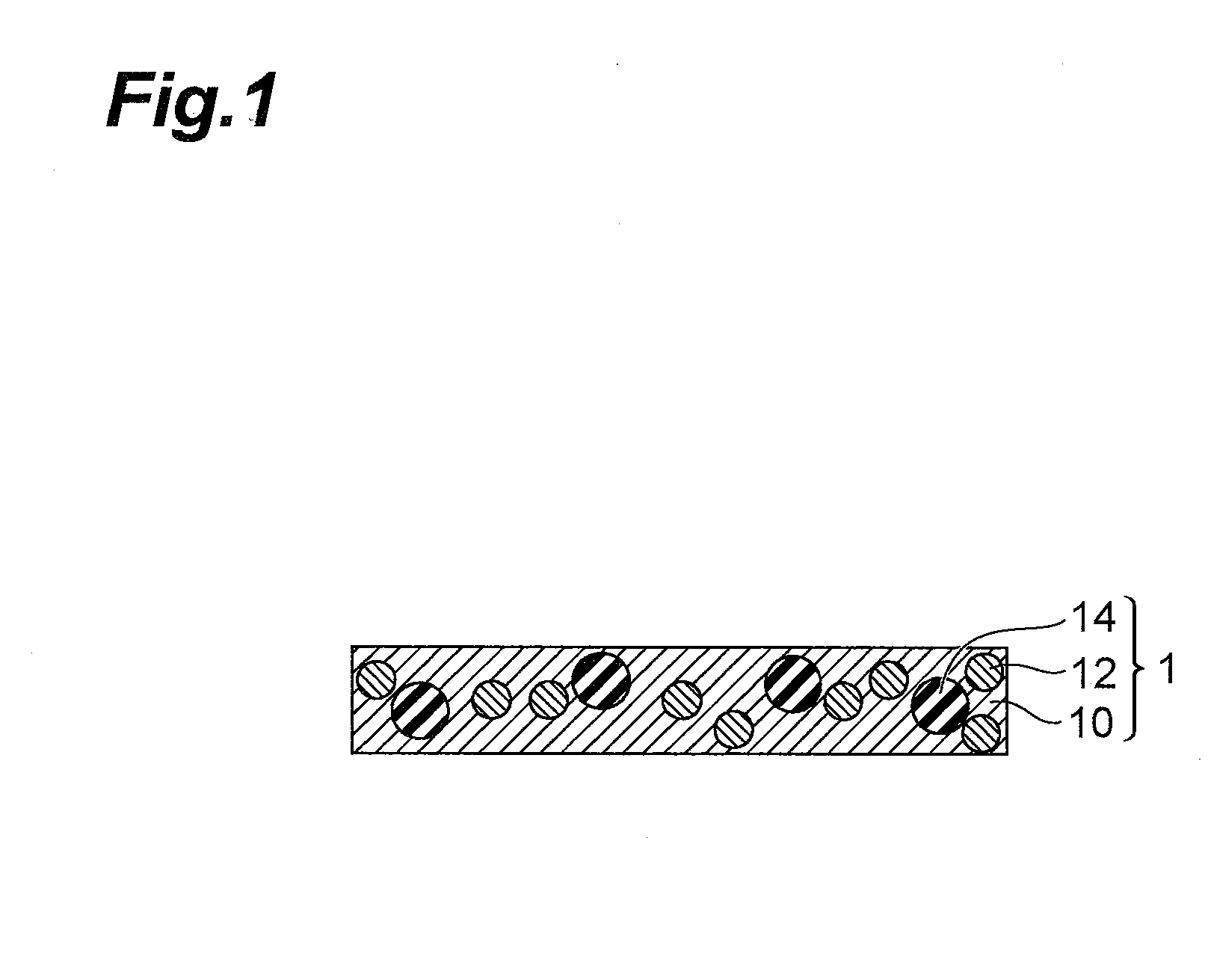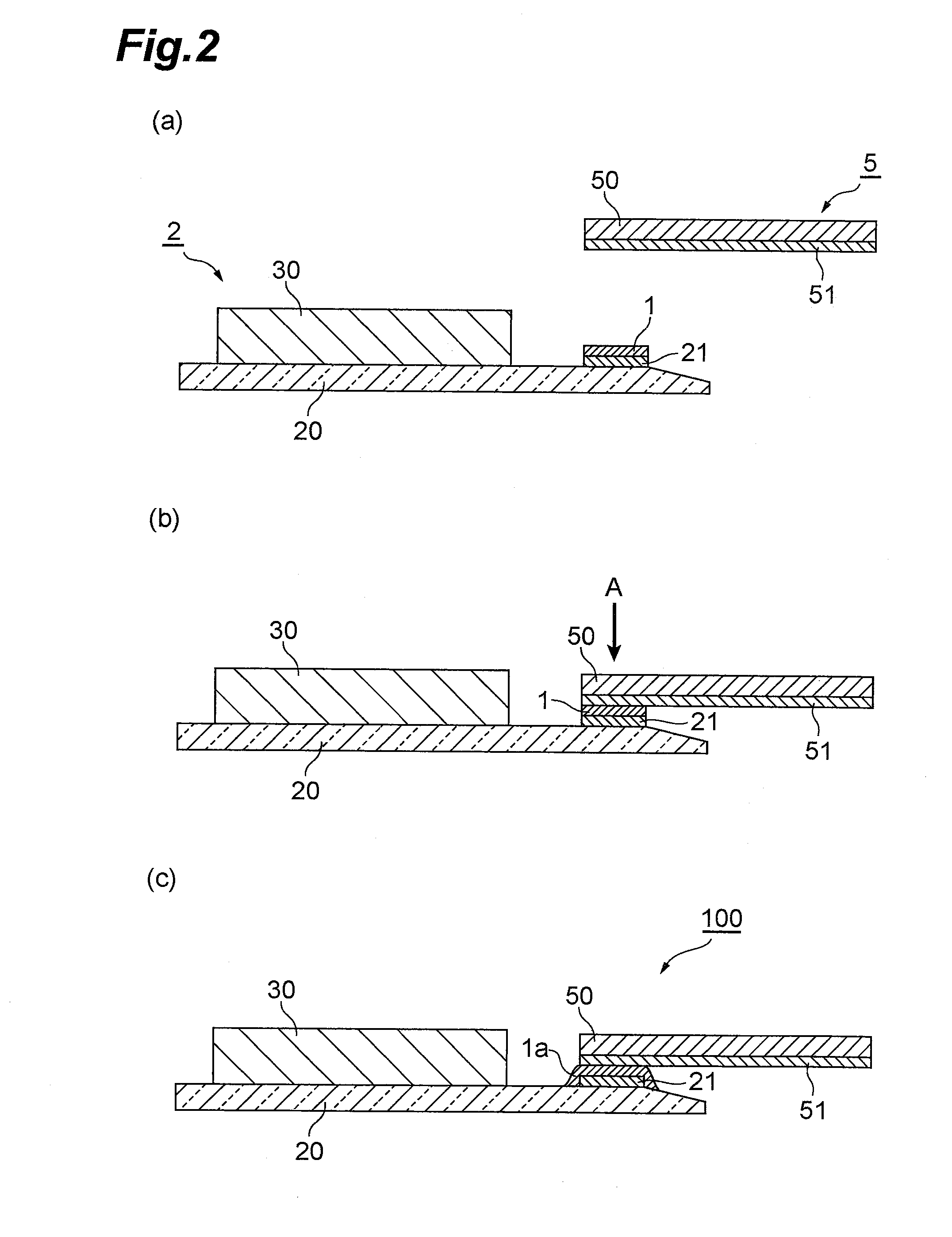Circuit connecting adhesive film and circuit connecting structure
- Summary
- Abstract
- Description
- Claims
- Application Information
AI Technical Summary
Benefits of technology
Problems solved by technology
Method used
Image
Examples
example 1
[0069]After combining 20 parts by weight of the radical-polymerizing substance urethane acrylate (trade name: UA-5500T, product of Shin-Nakamura Chemical Co., Ltd.), 20 parts by weight of bis(acryloxyethyl) isocyanurate (trade name: M-215, product of ToaGosei Co., Ltd.), 10 parts by weight of dimethyloltricyclodecane diacrylate (trade name: DCP-A, product of Kyoeisha Chemical Co., Ltd.), 1 part by weight of 2-methacryloyloxyethyl acid phosphate (trade name: P-2M, product of Kyoeisha Chemical Co., Ltd.), 3 parts by weight of benzoyl peroxide (trade name: NYPER BMT-K, product of NOF Corp.) as the free radical generator and 50 parts by weight of a 40 wt % solution of a polyester-urethane resin (trade name: UR8240, product of Toyobo, Ltd.) in a toluene / methyl ethyl ketone=50 / 50 mixed solvent, the mixture was stirred to obtain an insulating adhesive solution.
[0070]To this solution there were added and dispersed 3 vol % of conductive particles with respect to the insulating adhesive, and ...
examples 2-5
[0072]A tape-like circuit-connecting material was fabricated in the same manner as Example 1, except that the types and amounts of non-conductive particles were changed as shown in Table 1. The non-conductive particles used in Example 2 were polyamide-based elastomer particles (mean particle size: 10 μm, 10% compression modulus (K value): 260 Kgf / mm2, melting point: 170° C.), the non-conductive particles used in Example 3 were polyamide-based elastomer particles (mean particle size: 5 μm, 10% compression modulus (K value): 270 Kgf / mm2, melting point: 180° C.), the non-conductive particles used in Example 4 were polyamide-based elastomer particles (mean particle size: 3 μm, 10% compression modulus (K value): 280 Kgf / mm2, melting point: 200° C.), and the non-conductive particles used in Example 5 were polyester-based elastomer particles (mean particle size: 5 μm, 10% compression modulus (K value): 290 Kgf / mm2, melting point: 210° C.).
PUM
| Property | Measurement | Unit |
|---|---|---|
| Percent by mass | aaaaa | aaaaa |
| Percent by mass | aaaaa | aaaaa |
| Melting point | aaaaa | aaaaa |
Abstract
Description
Claims
Application Information
 Login to View More
Login to View More - R&D
- Intellectual Property
- Life Sciences
- Materials
- Tech Scout
- Unparalleled Data Quality
- Higher Quality Content
- 60% Fewer Hallucinations
Browse by: Latest US Patents, China's latest patents, Technical Efficacy Thesaurus, Application Domain, Technology Topic, Popular Technical Reports.
© 2025 PatSnap. All rights reserved.Legal|Privacy policy|Modern Slavery Act Transparency Statement|Sitemap|About US| Contact US: help@patsnap.com



